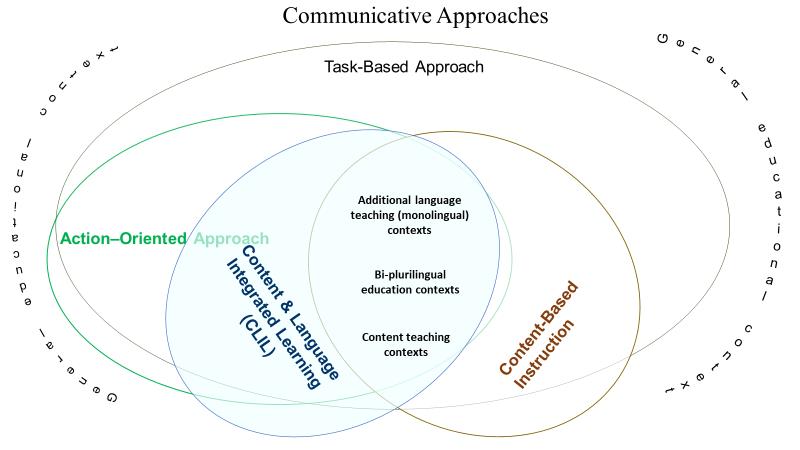
CLIL: The Global Trend In Bilingual Education!
Not just bilingual populations should benefit from bilingual education. Schools all across the world are seeking methods to provide their children with the advantages of studying a second language, according to research showing these benefits extend to almost everyone. The CLIL technique is one bilingual education teaching strategy that is growing in popularity. Teachers and school administrators must, however, have a solid grasp of the underlying theories as well as the necessary training to implement those ideas in the classroom to fully benefit from this integrated approach.
What Does CLIL Stand For?
Content and Language Integrated Learning is referred to as CLIL. This entails learning a language, like English, while also studying another topic, such as science, literature, or history, therefore merging the two. The concept is wide since there are several ways in which integration can occur.

There isn't a single model. It may be a motif. It could be based on ideals. This is something you can work on for a short while or a long period. However, the underlying tenet of CLIL is that language learning and language use development are integrated through content development.
Before you move to the topic, can we ask you a quick question? Do you follow us on Social Media? If not, then you’re missing out on a lot of informative content. We regularly share upgraded educational content, tips, feedback, and more. Check us out by clicking the profiles here - Facebook / Twitter / LinkedIn / Pinterest / Instagram / YouTube
What Are The Core Features Of CLIL Methodology?
Collaboration between content and language instructors is essential for a CLIL program to be effective. Since each is an expert in their domain, they must exchange knowledge and its corresponding tenets.

- The Content Teacher
A content teacher instructs students in a particular subject, such as biology, architecture, or music. However, employing CLIL as a methodology involves more than merely teaching a different topic in English. Typically, content instructors are not specialists in pedagogy or language acquisition.
Therefore, topic instructors often need some training to teach their subjects. They may also utilize a practice called translanguaging, in which they teach in both their students' original language and English. They will also be dependent on the language instructor's assistance.
- The Language Teacher
Although teaching English is the language teacher's primary responsibility, in the context of the CLIL methodology, the language teacher also assists the content teacher.
They do so by introducing vocabulary and functional language that is pertinent to a particular subject (biology or history, for example) and by emphasizing critical thinking.
How To Implement CLIL In Your Classroom?
Teachers who are interested in implementing CLIL in their classrooms must be proficient in creating and implementing lessons that teach the four language skills—reading, writing, speaking, and listening to non-native speakers.

Here is how you can incorporate them in your classroom:
1. Listening CLIL Activities
Following the second or third hearing, students can discuss and make comparisons with people in their immediate vicinity. Afterward, the class reconvenes to verify any remaining doubts or issues that they were unable to resolve with their partners.
Here is the formula you can implement for listening activity:
- Pre-teach unknown vocabulary or difficult words
- Listen to the gist for the first time without the handout
- Listen to the gist for the second time with questions written on the handout for specific details
- If over 50% of the questions are answered the second time, this step can be skipped. Or you can listen to the gist for the third time to get the missed details.
2. Reading CLIL Activities
Students can now work alone, with a partner, or in groups to solve comprehension problems with or without the text. When answering comprehension questions without the text, a companion might help by talking over the material and using shared memories to answer the questions.
Here are a few things you can try to incorporate reading:
- Pre-teach unknown vocabulary or difficult words and highlight them in the reading text
- First-time students read aloud the text to divide it equally into paragraphs or sentences to practice pronunciation
- Students then again read a second time silently to comprehend
3. Writing And Speaking
Output is anything that pupils create in a language other than their native one. The productive skills that instructors must participate in include writing and speaking. Depending on what has to be corrected, the student's level, and/or the activity, the teacher, the student, or a peer can correct errors.
Students can use any of the following methods to work on productive assignments that call for speaking and writing:
- Pairs
- Individual
- To teams
- Small groups
- Whole class
Students first select the role they want to perform. After that, the movie's transcript is given to them. They listen and observe, paying attention to the characters they are portraying and how they sound, after outlining their part or roles and what they need to say. The next stage is to have the class rehearse the script in small groups, two teams, or as a whole, depending on the number of pupils in the class.
Get Ready For CLIL Lessons
Teaching content in a foreign language is the focus of CLIL. In addition to being a crucial tool for advancing language learning objectives, teachers with a Bachelor of Education in TESOL may use CLIL means of facilitating meaningful language usage that is motivated by particular content. It also offers a means of embracing linguistic diversity and gaining a better knowledge of the cultures and languages.
We believe education should be accessible for everyone. That’s why we don’t charge for our blogs. Find the right course that will help you in your career with us, contact us at +66-21055721. You can mail us at act@asiancollegeofteachers.com

